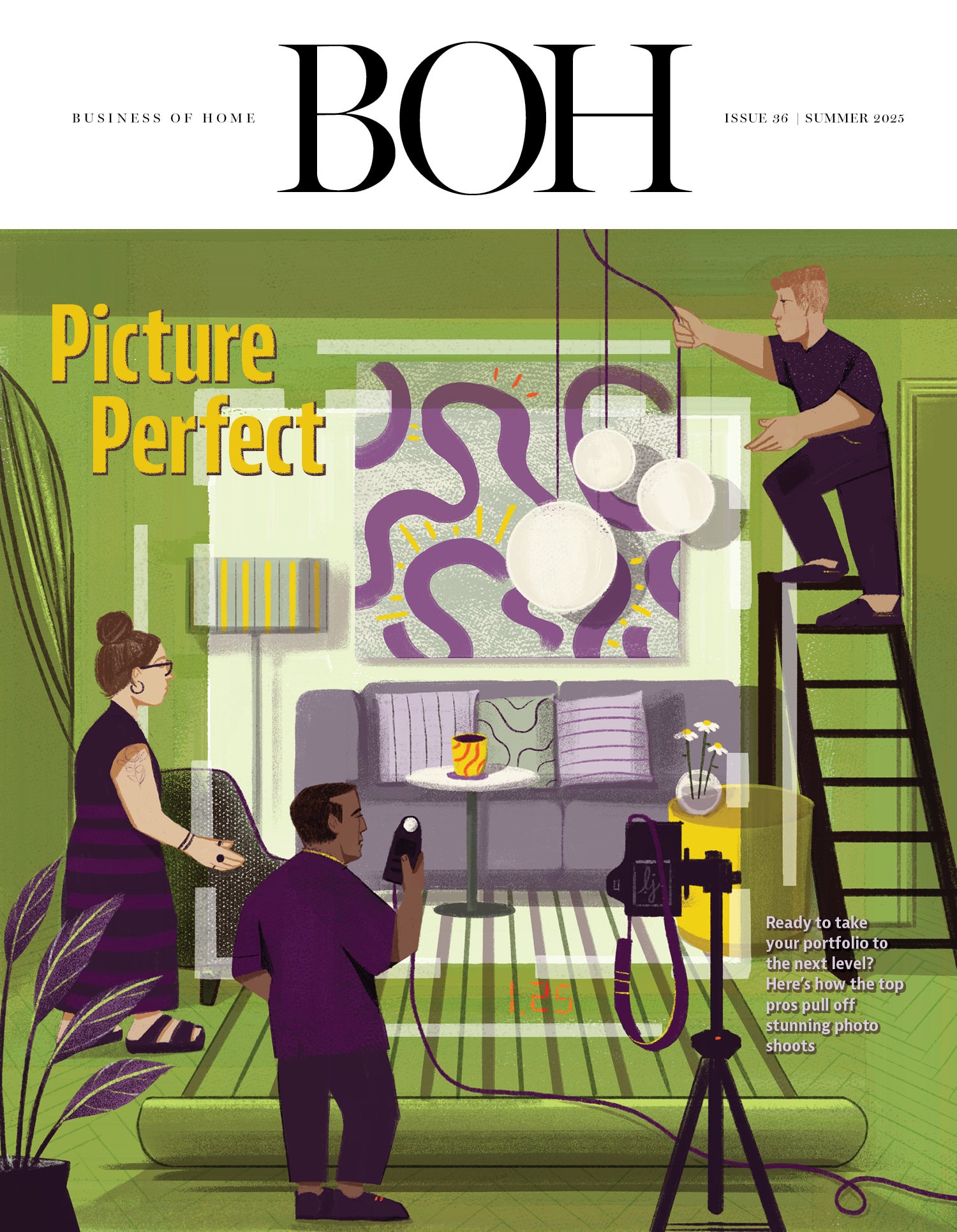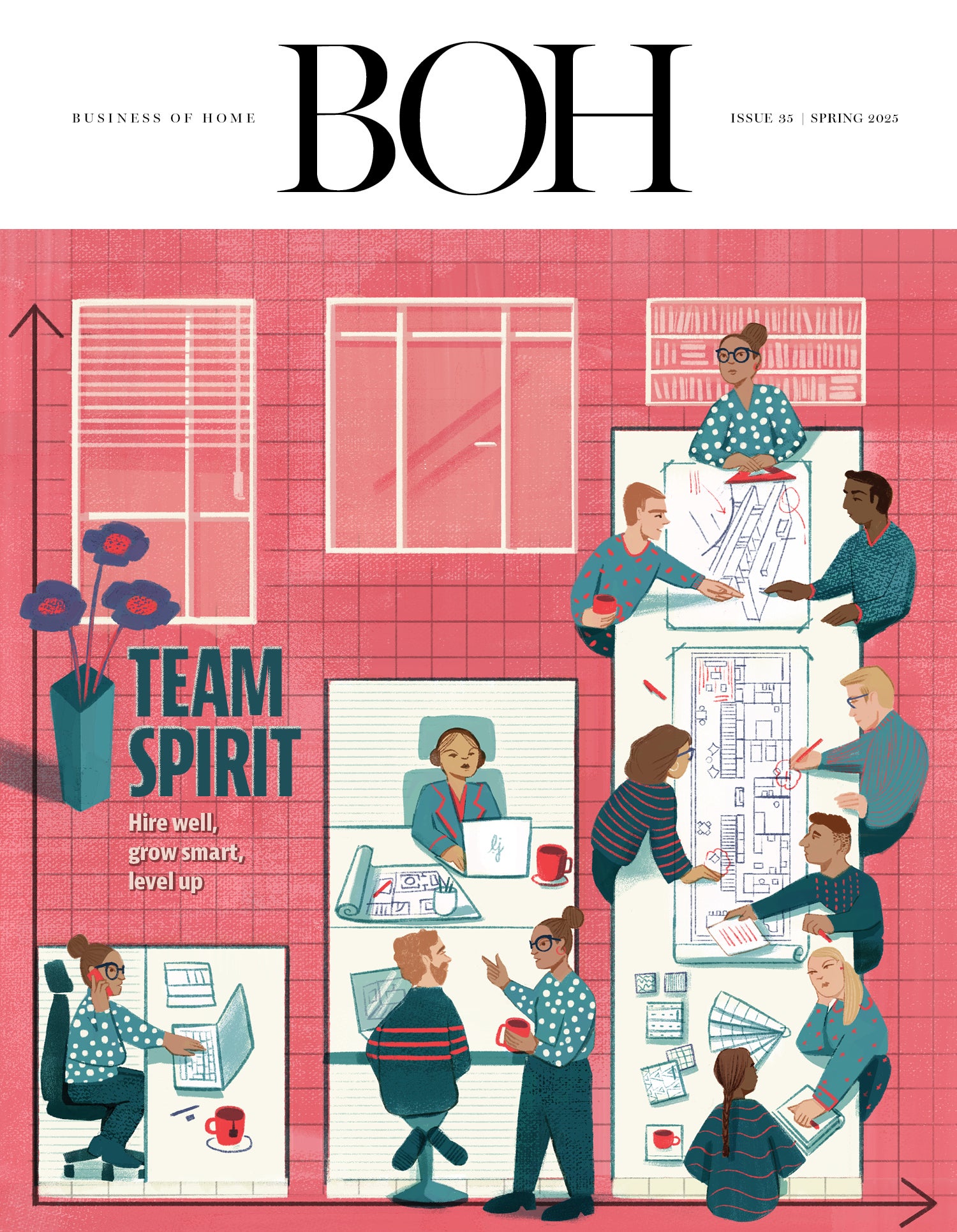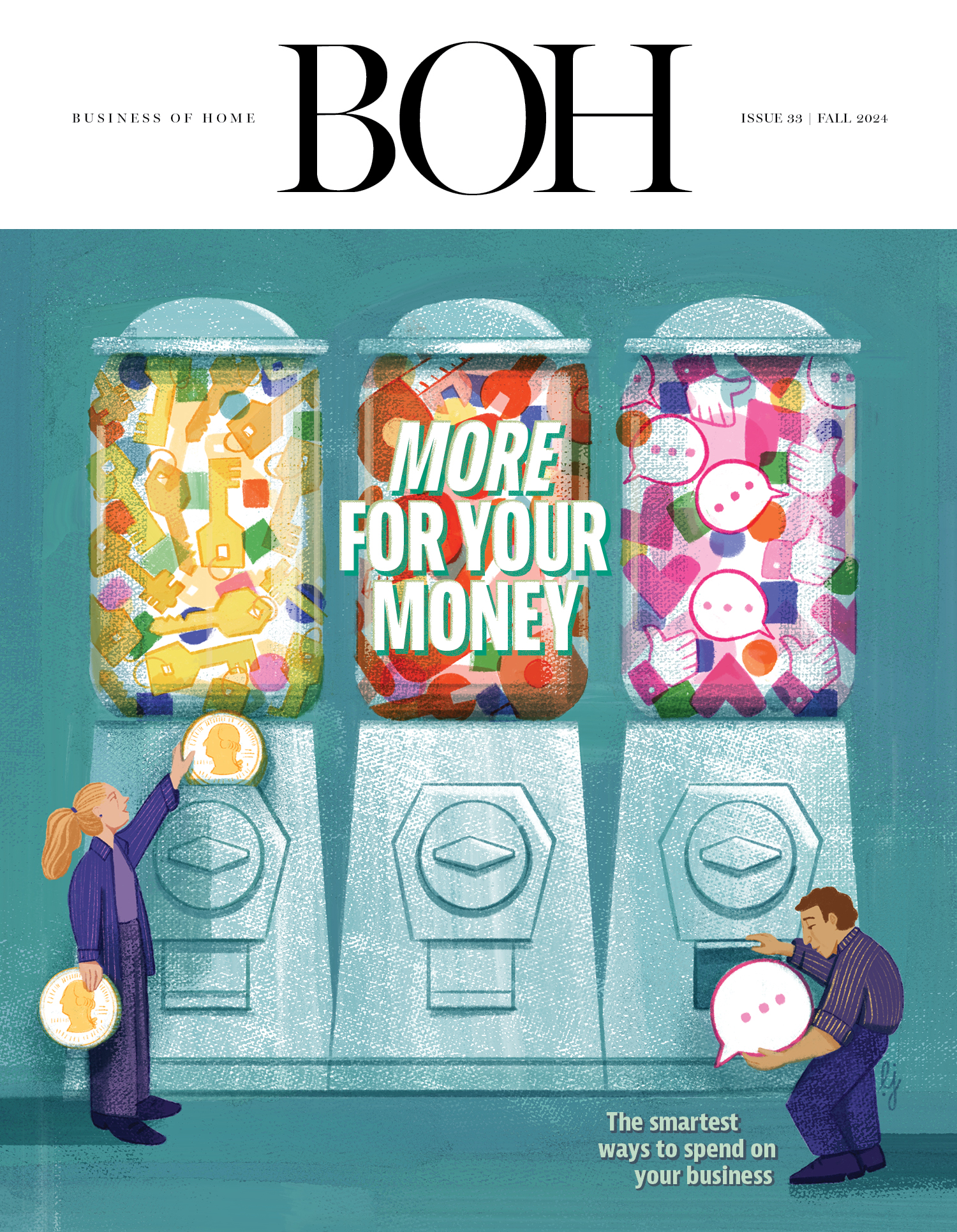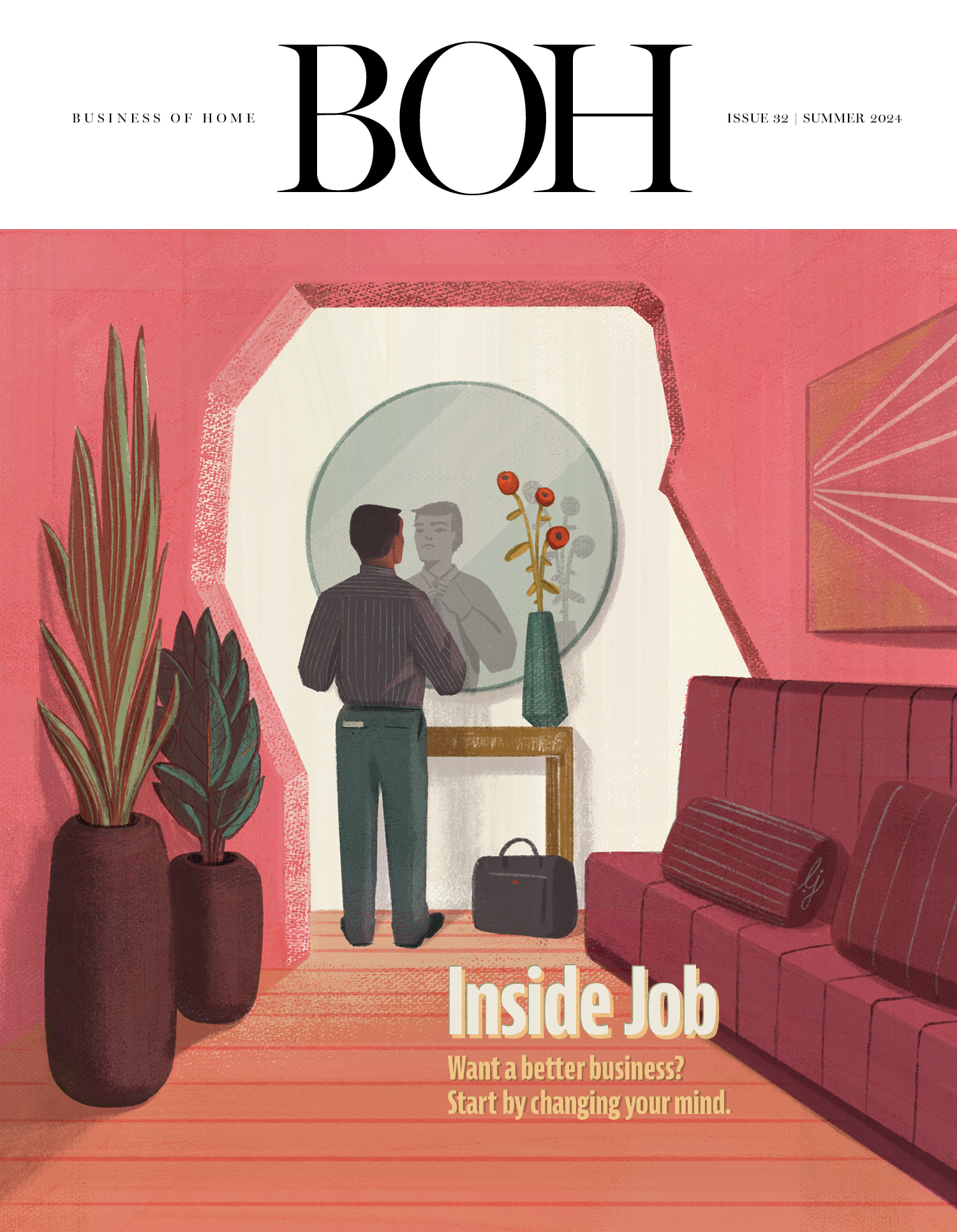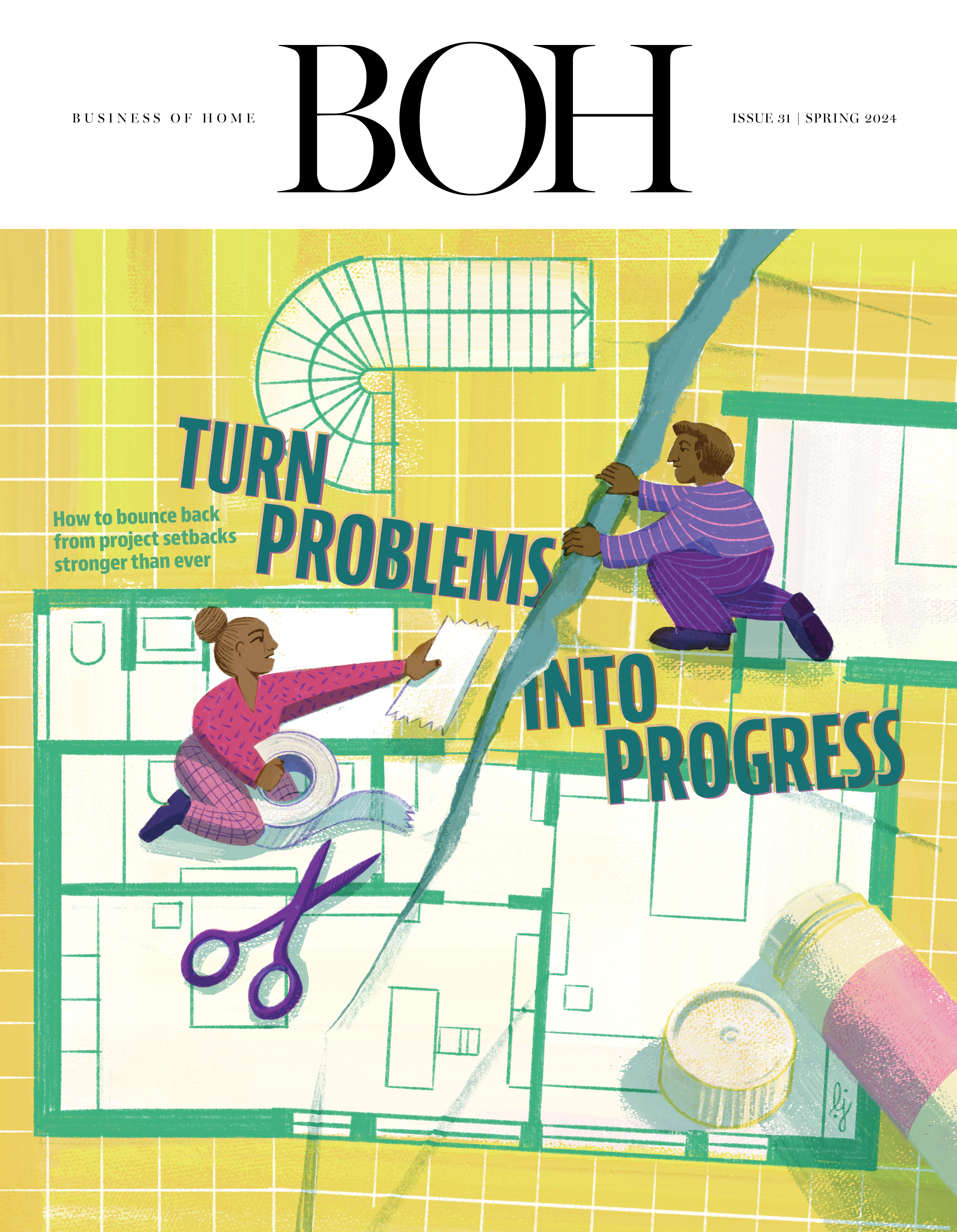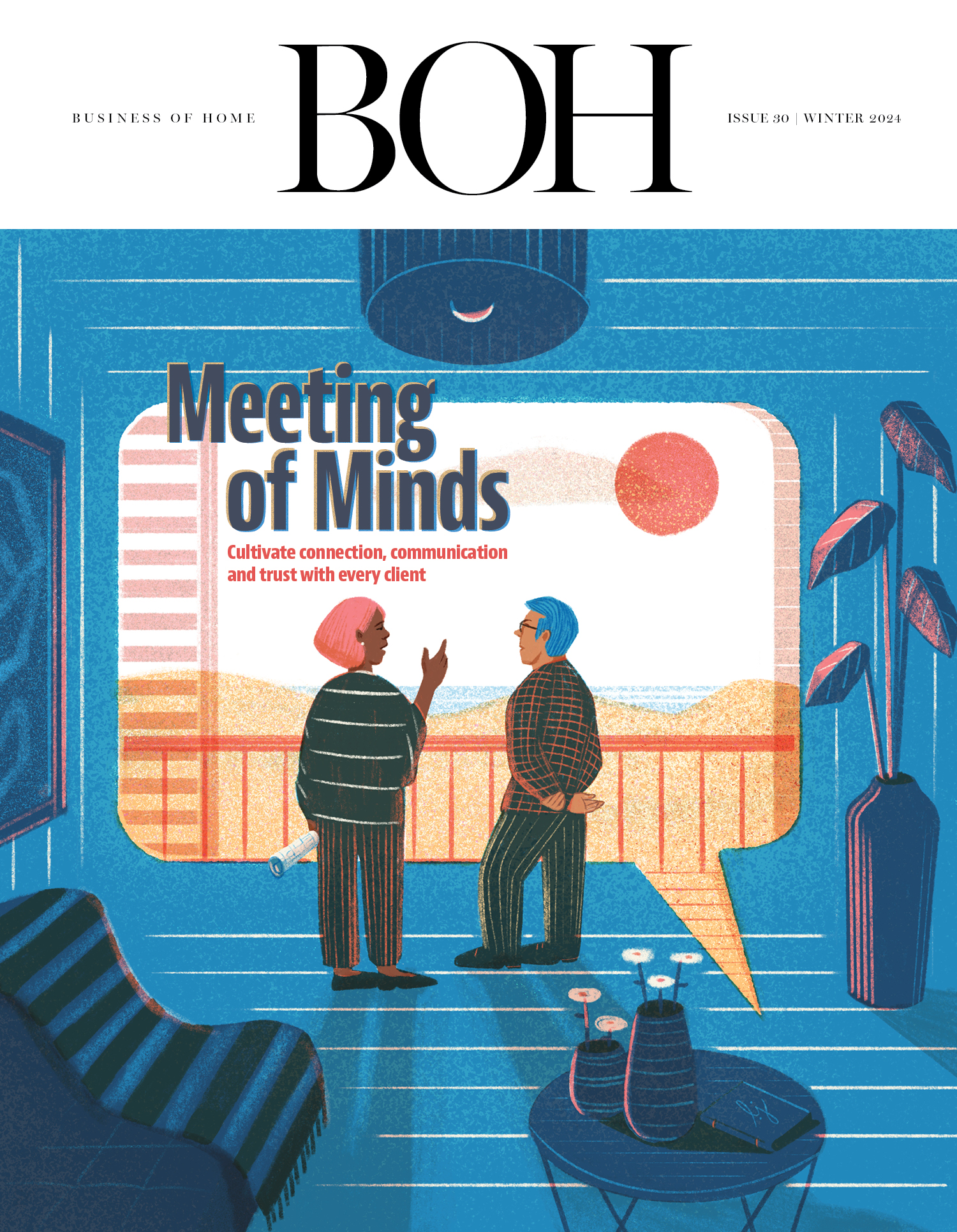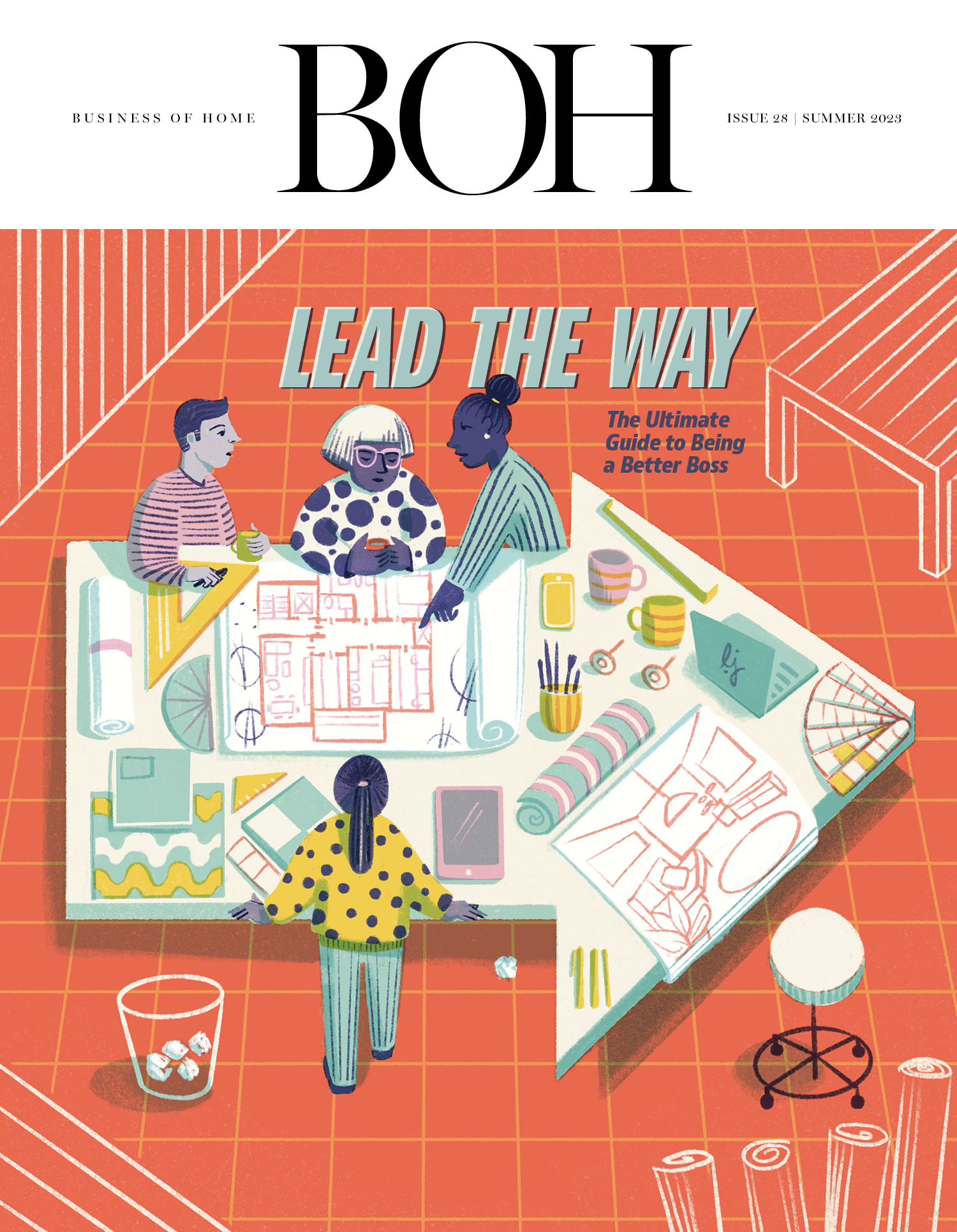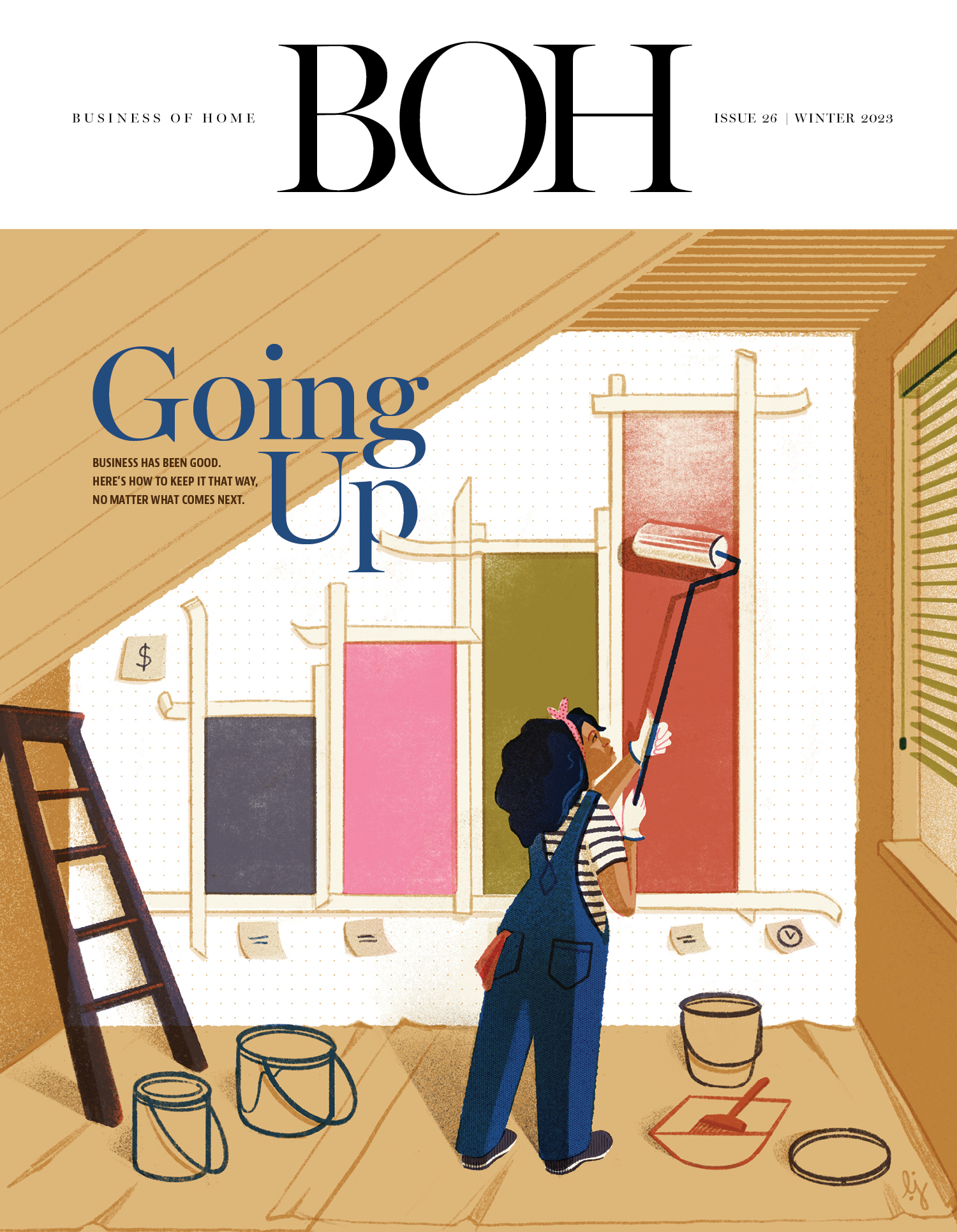Sometimes it takes a little push to help a client make a bold design choice. This week, we asked eight designers—Ellie Christopher, Hillary Cohen, Cynthia Ferguson, Sherrell Neal, Theresa Ory, Jasmin Reese, Nicole Roe and Sarah West—how they get their clients out of their comfort zones.
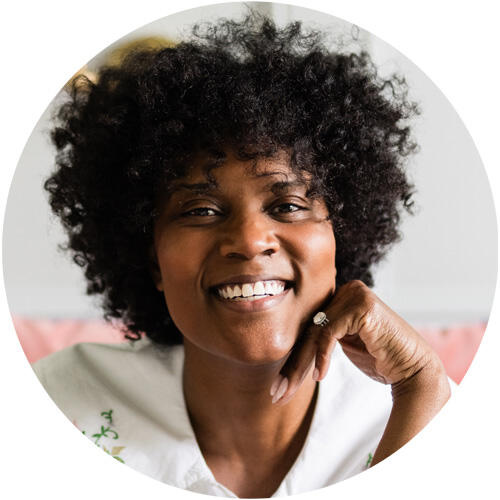
Build a Foundation
“I start by listening closely for cues during those early client conversations, as empathy and connection are essential to building trust. I leave space for my clients to share stories and connect beyond the design itself, asking about their hobbies, travel habits, favorite hotels, and how often they host. That feedback becomes a creative tool, helping me translate their fondest memories into meaningful, story-driven design. Showcasing past work is also a powerful visual tool, building trust in our ability to bring intentional, boundary-pushing ideas to the table. It shows the client we’re not here to repeat, but instead we’re here to create something unique to their lives and their home. That clarity reinforces the value that I bring to the process as the designer. When using renderings or other visual tools to communicate your designs, [a helpful strategy is to] present both the safe option and the bold choice. It gives clients context, builds confidence, and helps support your vision on why they should take a creative leap. With time, you learn who your clients are or who they want to become. Are they trend-seekers, or do they value thoughtful high design? One client might need more reassurance than the other, but that understanding gives you a clear sense of when to push boundaries. After all, you’re the expert, so guide them toward the bold choice when it matters, and speak up when it’s time to break the rules!” —Sherrell Neal, Sherrell Design Studio, Houston

The Three E’s
“We use the three E’s: enthusiasm, eyes and education. When we present the idea, we don’t hold back our enthusiasm. If we’re excited enough while presenting the concept that our eyes are twinkling just talking about it, that feeling is contagious. It’s an immediate jolt in the right direction. We then share the concept with our client as a 3D rendering or a video tour to leave as little to the imagination as possible, allowing their eyes to absorb the vision more fully. This way we’re not asking them to understand it; we’re simply letting them see it. Lastly, we remove as many remaining barriers as we can with education. Let’s say we’ve won the client over and they’re feeling ready, but the [contractors] still have hesitations. We arm ourselves with as much information as we can: material specifications, technical possibilities, functional and logistical details that can assist in helping everyone involved feel more secure in the investment and longevity of the design.” —Theresa Ory, Theresa Ory Interiors, Atlanta

It’s All About the Visuals
“Many of our clients naturally gravitate toward a more neutral palette, but when there’s openness to something bolder, that’s where the fun begins. We present the idea with detailed renderings, which really help clients visualize how a risk—whether it’s color, material or form—will play out in their own home. These visuals can be transformative, especially for those who have a hard time imagining the finished space.
We also bring in physical samples and curated mood boards to give them something tactile to respond to. Seeing and feeling the actual materials helps the concept resonate. It becomes less abstract and more personal. When clients can fully see the vision coming together in both a visual and physical way, they’re much more confident, embracing choices that feel outside their comfort zone but ultimately make the space feel layered, thoughtful and tailored to them.” —Sarah West, Sarah West Interiors, Los Angeles

Sketch It Out
“Most of my clients come to me because they know I love mixing color and pattern, but not everyone is immediately on board with bold choices. It’s not that they don’t trust me; they’re just hesitant, especially when they can’t visualize how a tiny swatch of fabric will look on a full set of drapes or an upholstered sofa. Social media can be helpful, but it can also backfire. I once showed a client a photo of a fabric on a sofa, and all she could focus on were the drapes in the background that she didn’t like. That’s when I lean on one of my most valuable tools: my ability to draw! If needed, I’ll sketch out the drapery details, pillow designs, or even an entire elevation—whatever it takes to help someone see what I see. Patience, both with yourself and with your client, is everything. My goal isn’t to impose my vision, but to create a home that reflects who they are, both as individuals and as a family. I check my ego at the door. If a client can take one small leap and love the result, they’re usually more willing to take the next one. It’s all about earning trust. And once that trust is there, the entire process becomes a joy for both of us.” —Ellie Christopher, Ellie Christopher Interior Design, Birmingham, Alabama

Open Communication
“When I present an unexpected idea to a client, I always take the time to explain my reasoning in person. I walk them through why I believe the concept works for their space, addressing any concerns on the spot before there’s time for hesitation or second-guessing. I’ve found that getting buy-in in the moment often leads to the most satisfying results. Clients may be initially surprised, but they’re almost always thrilled when the vision comes together. It can be a delicate dance to remind clients that you’re the expert, but when you present your ideas with clarity, confidence and purpose, they tend to follow your lead—and thank you later.” —Hillary Cohen, HCO Interiors, Basking Ridge, New Jersey
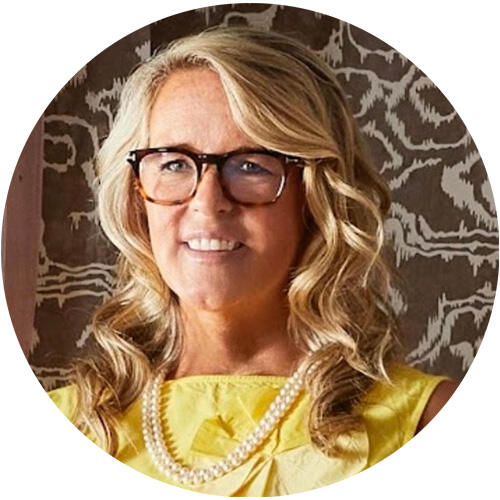
Start Small
“Safe isn’t better in a creative industry. We start small and build confidence. We begin with an easy room, such as the powder room, and let our clients get their feet wet in a small, uncomplicated space, pushing the boundaries by suggesting a wilder wallpaper, for instance. We use software to really sell our ideas, as most clients struggle to understand what we are visualizing for their home. It is much easier to sell our clients on an approach once they can see a rendering. We explain to our clients why we believe this is the right approach through our experience, our knowledge and the trust we build. At the end of the day, the homes we create for our clients must reflect them, but be much better than they ever imagined possible, which is why we work so hard to listen, know when to push them a bit and create the magic in each project we design.” —Cynthia Ferguson, Cynthia Ferguson Designs, Toronto

First Step, Listen
“Getting clients to take design risks isn’t about pushing your vision. It’s about giving them the confidence to be unapologetically themselves. As designers, our first job isn’t picking finishes—it’s listening. We dive into who our clients are, how they want to live and what their space should reflect about their identity. When clients feel seen, bold choices feel less risky and more aligned. Risk doesn’t mean chaos. We still balance comfort and function. We’re not ignoring the real-life stuff—kids, pets and routines—but we’re also not letting practicality become the excuse for playing it safe. Great design can be both expressive and livable. Building trust is huge, but there still needs to be proof. Use renderings and other visuals along with real-life examples to show how a bold move supports their lifestyle and vision. Reframe risk as alignment and not rebellion. Ultimately, our role isn’t to dictate but to guide. To hold space for their fears, then lead with clarity and confidence. Because the real risk is designing a space that doesn’t feel like them at all.” —Nicole Roe, R. Nickson Interiors, Lakeland, Florida

Know Your Client
“It’s important from the start to understand how adventurous your client is before presenting options. In the first design meeting, we ask the clients how adventurous they think they are on a scale from 1 to 10. We also go through a series of professional interior design photographs during their ‘Style Session’ to see how they react to different schemes and get a sense of their aesthetic. Understanding their comfort level early on helps us see where their threshold is. From there, we try to gently push them about 10 percent past that point. That little stretch often leads to the most exciting results. Beyond that, it can start to feel awkward or forced—so it’s about finding the right balance.” —Jasmin Reese, Jasmin Reese Interiors, Chicago




